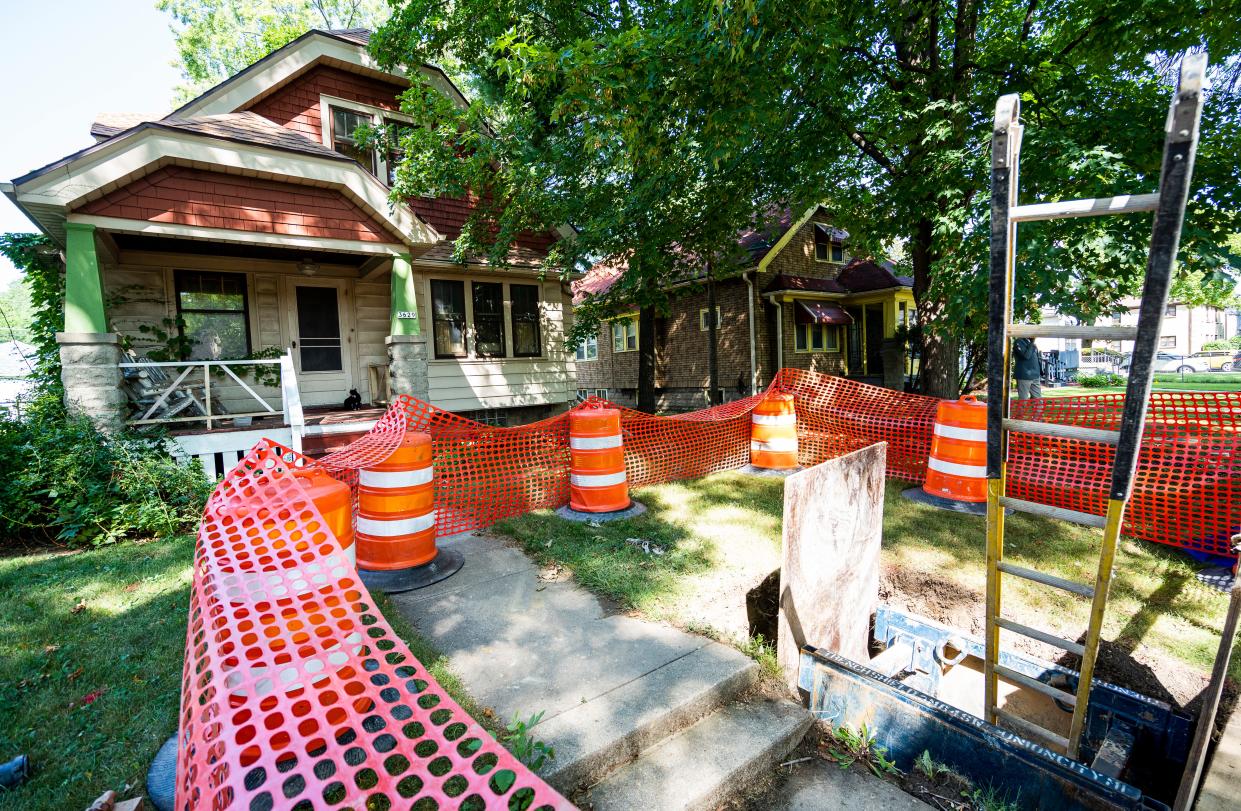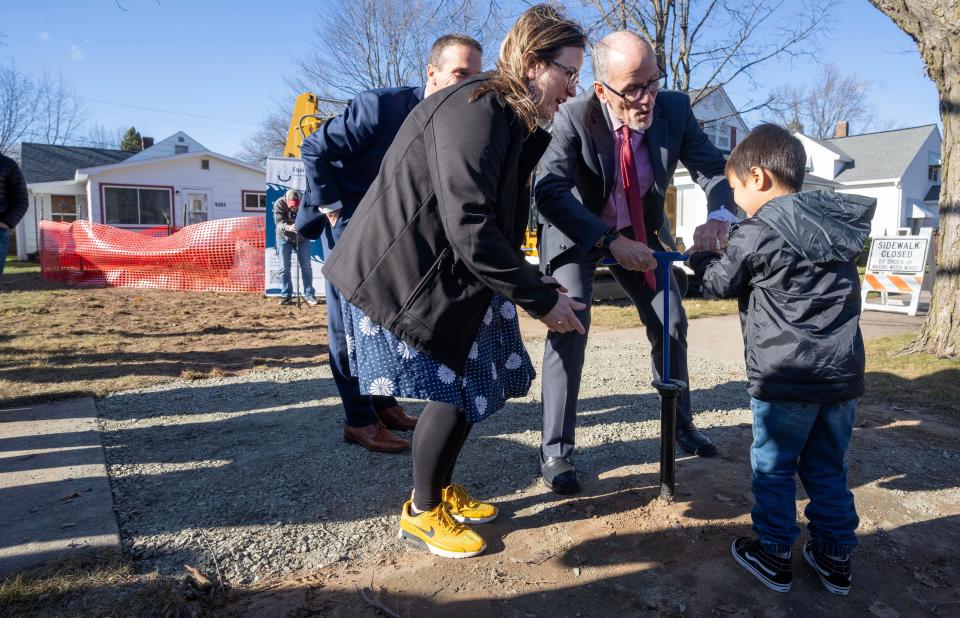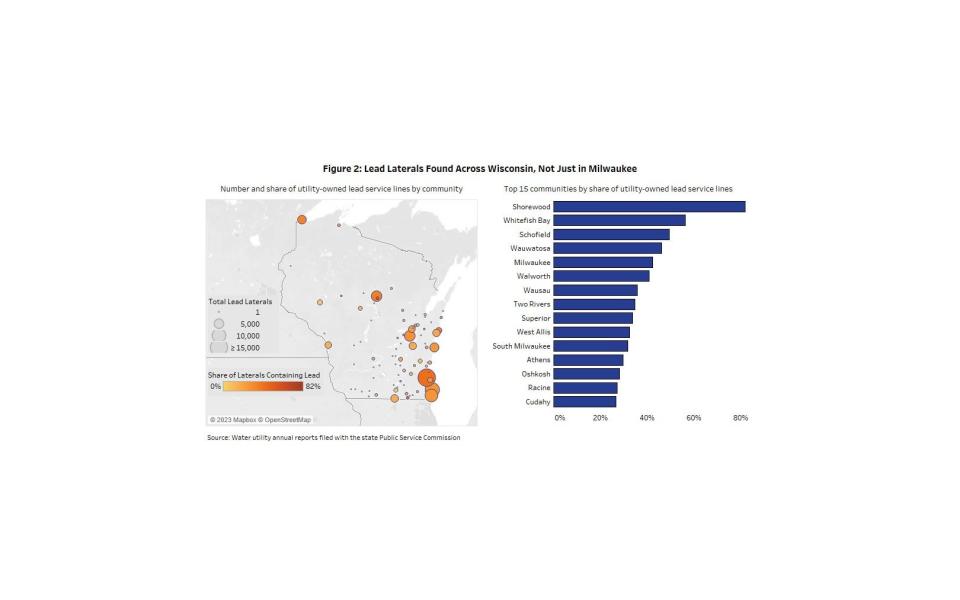Wisconsin has made strides on lead pipes but has a long way to go. Here's what a new report says

MADISON – Lead pipes are a bigger focus for Wisconsin than they ever have been before, with the state making a concerted push to eradicate the toxic metal from all water service lines across the state.
But that job is going to be a large — and very expensive — one to tackle, according to a new report from the nonpartisan Wisconsin Policy Forum. The report highlights how much work has been done in Wisconsin and how much work is left to do, especially in Milwaukee.
Here's what the Policy Forum said in its most recent report.
Why is it so important to address lead?
Ingesting lead is harmful to human health and can limit brain development, impact the nervous system and often leads to diminished intellectual capacity in children.
Dust and paint chips from cracked or peeling lead paint often pose the biggest risk, but drinking water containing lead still contributes 10% to 20% of the lead intake of American children, and that figure climbs when considering infants fed with formula.
While consuming lead is unhealthy for adults, children are even more at risk.
In Milwaukee, the Wisconsin Department of Health Services reported in 2018 that 9.2% of children age 5 or younger in Milwaukee have elevated blood lead levels.
Is there a way to protect residents if lead pipes haven't been removed?
Yes, water treatment plants can put measures in place to slow down or stop lead from chipping off from the inside of pipes and getting into the water that flows into a residence.
Water utilities sometimes use phosphates to coat the inside of the pipes, according to the report, but that fix isn't permanent.
"The coating can be compromised by changes to water chemistry or by work on water mains, which can lead to contaminated water," the report says. "Since even coated lead pipes carry some risk, removal is the safest long-term option."
Where is lead used?
Lead wasn't used in Wisconsin for the pipes that carry water from the water treatment plant in the city to homes, but it was used in many of the laterals that carry the water from the city infrastructure underneath streets and up to homes.
Lead was used for laterals because of its flexibility — it could be curved around trees or rocks — and because there was less risk of the pipes bursting when the ground froze.
Lead was also sometimes used as solder to join pipes within homes, and at times, as a part of plumbing indoors.
The use of lead laterals began to decline after the 1930s and was halted in 1986 by the Environmental Protection Agency.
More: Wisconsin schools still have water fixtures with lead. Here's what that means
Who owns the lead service lines?
Ownership of the lead laterals connecting homes to the water utility are often mixed, according to the report.
Cities typically own the line from the watermain up to and including a shutoff valve. Homeowners typically own the rest of the line into the home. Sometimes, the city owns the entirety of the line.
Where are the lead pipes in the state?

Wisconsin has more than 150,000 lead service lines across 92 communities, according to the Policy Forum. Since 1998, more than 73,000 have already been replaced, with 37,000 of those replacements occurring since 2018.
Milwaukee has the most pipes to be replaced, with upward of 70,000 lead lines. It replaced about 6,300 lead service lines since it started systematically replacing them in 2017, according to Milwaukee Water Works.
The city hopes to replace all of its lead pipes over the next 20 years, with 1,200 replaced in 2023, 2,200 in 2024 and 2,700 in 2025. But that pace will have to accelerate if the city plans to keep that timetable, the report said.
Outside of Milwaukee, the Policy Forum report estimates a handful of other communities may have large amounts of laterals, such as Shorewood, Whitefish Bay, Schofield, Wausau, Superior and Racine.

Data is lacking on where lead laterals are. A number of communities lack data on what pipes are made out of, but the state is making a more concerted effort to have water utilities survey and record where pipe replacements are necessary.
"Estimating the number of lead service lines still serving Wisconsin homes and businesses is difficult, because these lines are buried underground, and were installed decades ago," the report says. "The data collected by the Public Service Commission place the estimated number of utility-owned lead lines at more than 158,000 and the number of customer-owned lead lines at more than 141,000."
More: Wisconsin schools still have water fixtures with lead. Here's what that means
Who pays for lead line replacements?
Often, when lead lines are replaced, expenses are passed along to customers of the water utility.
In some places, such as Madison — which has replaced all of its remaining lead pipes ― the city covered half the cost of customers' lines, while the other half was paid by the homeowner.
But recently, the federal government has started to put more funding toward replacing private lead laterals, providing $90.6 million to Wisconsin utilities for forgivable loans. Recent funding within the Bipartisan Infrastructure Law has provided an additional $373 million for the state.
But that funding may not be enough. The Policy Forum report estimates that it could cost between $500 million and $600 million to replace every lead lateral, on top of the cost to customers, too.
In Milwaukee, the city is poised to receive $30 million from the federal government to address lead pips in 2024. Pipes will be replaced when water main replacements or certain paving projects are carried out, the report says, or when laterals start to leak or are damaged.
Milwaukee Water Works has indicated there may be ordinance changes in the future that could end customer charges for replacements, in addition to allowing tenants of rental housing to consent to replacement in addition to landlords.
"The plan prioritizes efforts based on socio-economic factors, the presence of elevated lead levels among residents, and the area’s density of lead service lines," the report said.
More: Milwaukee disinfects its water to ensure safety for residents. Here's what you should know
Laura Schulte can be reached at leschulte@jrn.com and on X at @SchulteLaura.
This article originally appeared on Milwaukee Journal Sentinel: What to know about a new report on lead pipe replacement in Wisconsin

